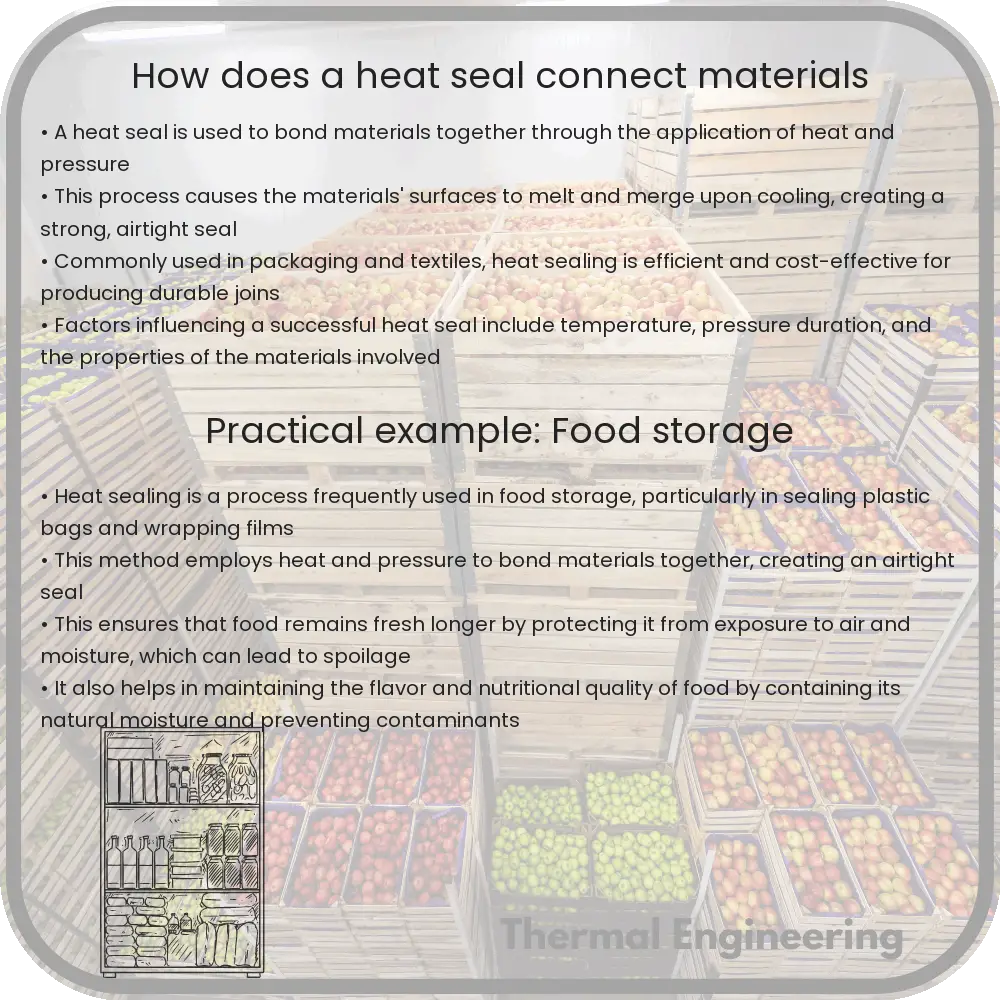Learn about heat sealing, a process used to join materials by applying heat and pressure in industries such as packaging and textiles for reliable seals.

Understanding Heat Sealing in Material Connection
Heat sealing is a fundamental process used in various industries to join materials together by applying heat and pressure. This method is particularly prevalent in packaging, textiles, and thermoplastics industries, where it provides a reliable and efficient means of creating airtight and watertight seals.
Basic Principle of Heat Sealing
The basic principle of heat sealing involves the application of heat to the surfaces of materials to be joined, melting the interfacing layers. Once melted, pressure is then applied, causing the materials to fuse as the layers cool and solidify. This process can be tailored to the specific properties of the materials being sealed, including their thermal and viscous behavior under heat.
Types of Heat Sealing
- Hot Bar Sealing: Involves a heated bar that is applied to the material for a predetermined time and pressure.
- Impulse Sealing: Utilizes a heated wire that quickly heats up for a short interval, melting the material only during the time of impulse application.
- Ultrasonic Sealing: Employs high-frequency ultrasonic acoustic vibrations to melt the material and form a bond.
Factors Affecting Heat Sealing
Several factors can influence the effectiveness and quality of a heat seal:
- Temperature: The temperature needs to be high enough to melt the material but not so high as to degrade it.
- Pressure: Sufficient pressure must be applied to unite the molten surfaces but must be balanced to avoid excessive thinning of the material.
- Dwell Time: This is the duration for which heat and pressure are applied. It must be optimized to allow for adequate melting and fusion of the material.
Applications of Heat Sealing
Heat sealing is employed in various applications, reiterating its versatility:
- Packaging: Used for sealing food packaging and pharmaceuticals to ensure product integrity and shelf life.
- Manufacturing: In assembling parts that require strong, leak-proof joints.
- Textile: Applied in processing garments, especially in attaching logos, labels, and hem seams in a way that is durable yet comfortable.
Conclusion
Heat sealing is a critical process in engineering that offers a durable and efficient method for joining materials. By understanding the essential parameters of temperature, pressure, and dwell time, industries can optimize this process to achieve high-quality seals that meet specific needs. Whether in packaging, textiles, or automotive manufacturing, the proper application of heat sealing technology is vital for achieving desirable product quality and functionality.